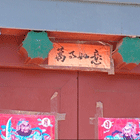Don visited a private home in the hutongs. In the urban district of Beijing, hutongs still occupy one third of the total area and they provide housing for half the city’s population.
Hutongs are actually passageways formed by many closely arranged siheyuans, or groups of houses around a courtyard. Siheyuans are arranged in rows, and vary in size and design according to the social status of the residents. Siheyuans all face the south for better lighting and protection from the more negative forces from the north. As a result, a lot of hutongs run from east to west, satisfying feng shui requirements. Hutongs preserve a powerful sense of togetherness, where everybody helps each other out.
The siheyuan we visited was the home of an extended family. It was like a world in microcosm. In the courtyard there were flower and vegetable gardens, pet goldfish and aviaries for prize homing pigeons, while the houses were very functional and well laid out.
Hutong history
Many hutongs were built during the Yuan (1206-1341), Ming (1368-1628) and Qing (1644-1908) Dynasties. They surrounded the royal palace – the Forbidden City. The siheyuans close to the palace were for imperial kinsmen and aristocrats. Large siheyuans for high ranking officials and wealthy merchants were built with beautifully carved pillars and roof beams, and each had a front and back yard. To the north and south of the palace were simple, crude siheyuans for merchants and other ordinary people. These were built with small gates and low roofs.
A pair of Chinese lions or drum stones often can be found perched outside the large, thick red doors of the courtyards. Drum stones (baogushi) are circular stones resembling drums, each on a small plinth and occasionally topped by a miniature lion or a small dragon head. Most doors in China have a bar of wood across the bottom to keep out evil spirits. It is believed that evil spirits can’t step over the bar because they can’t bend their knees. Many courtyards used to be further protected by rectangular stones bearing the Chinese characters for Tai Shan (Mount Thai), to vanquish bad omens. Some courtyards still preserve their screen walls – feng shui devices erected in front of the main gate to deflect roaming spirits.
Courtyards used to house just one family of the nobility, but today many belong to the ‘work unit’ or danwei, which apportions living quarters to its workforce. Others belong to private owners.



